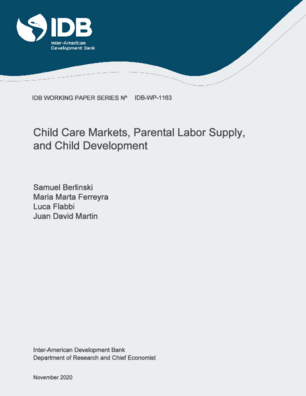Child Care Markets, Parental Labor Supply, and Child Development
Date
Nov 2020
We develop and estimate a model of child care markets that endogenizes both demand and supply. On the demand side, families with a child make consumption, labor supply, and child-care decisions within a static, unitary household model. On the supply side, child care providers make entry, price, and quality decisions under monopolistic competition. Child development is a function of the time spent with each parent and at the child care center; these inputs vary in their impact. We estimate the structural parameters of the model using the 2003 Early Childhood Longitudinal Study, which contains information on parental employment and wages, child care choices, child development, and center quality. We use our estimates to evaluate the impact of several policies, including vouchers, cash transfers, quality regulations, and public provision. Among these, a combination of quality regulation and vouchers for working families leads to the greatest gains in average child development and to a large expansion in child care use and female labor supply, all at a relatively low fiscal cost.




